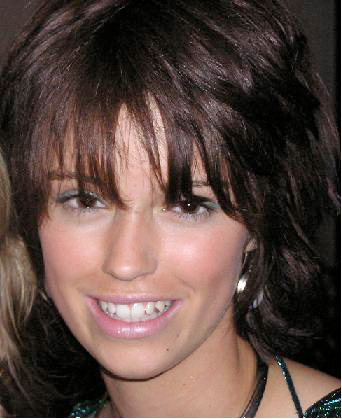Phoebe
I thought I’d had the worst day of my life when I was told my son had been killed, but eighteen months later, after my daughter had had x-rays to invtestigated a chronic shoulder problem, I rang her doctor to hear the results. She gave me the ‘worse case’ scenario and recommended visiting an orthopaedic surgeon for follow-up tests. I heard the news on Thursday but had to wait until Monday to see the surgeon. Tuesday and Wednesday it was tests, x-rays and a biopsy and by Friday it was chemotherapy in the Royal Children’s Hospital for a tumour the size of a mandarine in the top of her right humerus.
Phoebe was fifteen at the time. She had been at her new city school for six months and had just begun to settle in, make new friends and establish herself as an elite athlete. She was into everything; running, jumping, diving, gymnastics, hockey, tennis and horseriding.
She had said that she had had trouble sleeping but I put it down to the new environment – city noises are quite different from those in the country. Her high-jump coach came to speak to me as he was concerned that every time Phoebe landed she would grimace but then get up and go for another jump.
It was not until the holidays when I noticed that her posture was not as it should be and she reiterated that her shoulder was a problem. Because she was so active and often landed on her shoulder I thought it must have been injured at some time. Things really came to a head when she began gymnastics, something she had always wanted to try. The pain was more apparent but we thought she might have strained something. When she came to try hockey she found the pain shot down her arm. After numerous visits to doctors, physiotherapists and chiropractors, she was eventually sent for x-rays and the ‘worst case’ scenario became a reality.
Phoebe did not know what a tumour was so initially she was spared some of the anxiety. She was soon to find out the full meaning. Everything happened so quickly and during that time I operated on autopilot, enveloped in a protective cocoon; doing what had to be done and forever thankful that there were people who had the skills and knowledge to be able to give us a second chance even though we were almost destroyed in the process.
One of the hardest things during chemo sessions (before and after surgery to remove her humerus) was that whenever Phoebe began to feel better after treatment, it was time to return to hospital with vomiting, diarrhoea and ulcers. Her long, thick, brown hair and eyelashes fell out, grew back and then fell out again. She still has times when her eyelashes drop out.
The time all her mucous membranes ulcerated was one of the most heart-wrenching. Her lips, eyes and nostrils were swollen and bloodied and her fingers and toes developed huge blisters. There is much to be said for ‘Resource Plus’ fed through the PEG. Without it she would have starved.
Phoebe’s greatest fear was that of losing her arm or the use of her hand and I remember so well her first word after surgery. “Look”, and she wriggled her fingers, ever so slightly. To this day she cannot raise or rotate her arm. After surgery to remove the tumour and replace the humerus with a prosthesis, she had to undergo another round of chemo, having to cope with it without the use of her right hand. Throughout all of this most horrific time, never once did I hear my daughter complain.
Phoebe is one of the lucky ones. She came through treatment without too many setbacks. She had no health problems before this so did not bring added complications to an extremely complex process of treatment. She has taken up tennis using her left hand, has continued with athletics and has replaced high-jump with left handed discus. She is a natural right-hander! Her piano playing is restricted though she plays what she can. Diving is not an option and she no longer does ballet. She will be undergoing more surgery at the end of this year.
Along our journey to recovery there have been many children we have met who have not been given a second chance and this is why we must continue on with research into ways of catching this devastating disease before it can wreak more havoc. It is wonderful how much doctors now know about the many forms of cancer. The different tests and imaging processses all help them to pin-point the subtle differences to enable each cancer to be given specific treatment. Continuing with research to improve these processes is the reason CIKA exists. By being part of this auxiliary I and many other families who have loved ones affected by cancer can contribute to this valuable cause.
Wendy Taylor (2005)


You must be logged in to post a comment.